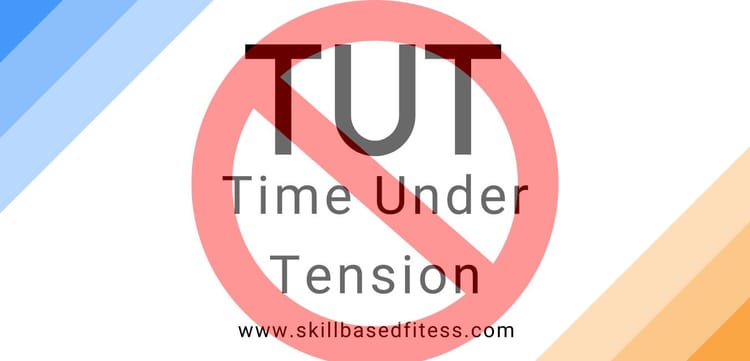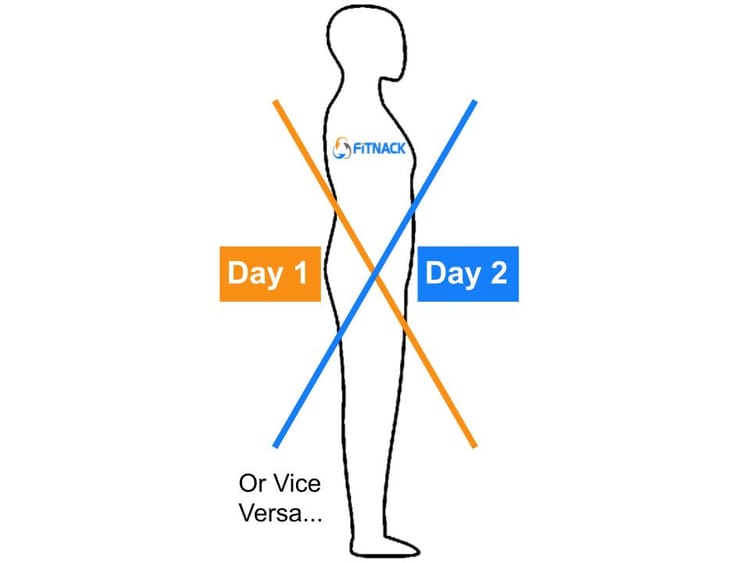What is "Functional Fitness?"

This buzzword just keeps proliferating in the online fitness world.
It had really spiked when I was new to the industry (2005-ish) when it was a buzz-term largely applied to what is now more adequately described as instability training.
And I thought it was dying once we were past peak Crossfit in like 2012 but according to Google Trends this word just keeps trending up the fitness consciousness in terms of searches.
It's still being thrown around willy nilly by a lot of people on the interwebz. And I don't think it means in the slightest what a lot of people seem to think it means.
According to Merriam-Webster dictionary the word "Function" has many meanings but I want to zero in on one:
"the action for which a person or thing is specially fitted or used or for which a thing exists"
This extends to the word functional:
"1) performing or able to perform a regular function"
"2) used to contribute to the development or maintenance of a larger whole"
In other words, functions are specific and something being functional is its ability to perform that specific function. Most often in the context of contributing one things towards the development of something larger as a whole.
For example, training the quads (one part of the body), which are primarily responsible for extending the legs (and for one muscle of the four; flexing the hip) in the context of total body strength or muscle mass development. Having strong quads will contribute to the strength of the entire system: The Human Body.
A Brief History
It's hard to determine when the term 'functional fitness' was first introduce to the fitness industry. But based on the google trends image above it didn't start trending until ~2004.
It spiked up in popularity in Sept.2005 and didn't reach those levels of interest again until a decade later.
This 2004 appearance coincides with the first-edition publication of one of my personal favourite fitness books, "Functional Training for Sports" by Michael Boyle.
Now I'm not saying, he coined the term. It was likely coined by strength and conditioning scientists who were confirming that strength training exercises can improve performance in sports performance. But I'd be willing to bet he popularized the term to some extent.
This early framework of just what "functional training" is was simple: training that produced strength gains that transferred well to particular sporting performances – things like sprinting or jumping. And Mike Boyle's original intent, and likely the original intent of the fitness community at large at that time was almost certainly in the same way gerontologists refer to the term today.
Yes, these are semantics but in the research world the word “function” is most often used by gerontologists – scientists who study the physical, psychological and social aspects of aging in relation to improving quality of life – in a very specific context → Activities of Daily Living (ADLs).
"The activities of daily living (ADLs) is a term used to collectively describe fundamental skills required to independently care for oneself, such as eating, bathing, and mobility. The term activities of daily living was first coined by Sidney Katz in 1950."
These researchers have often found that strength is a major contributing factor (sub-function) of many of these ADL functions. And using strength training is a very useful way to improve all of these ADL functions as well. Strength is also specific to the context of the function in question.
To expand on this; Think about things like sitting in a chair and standing up from the chair; Walking required distances; Using household objects like vacuum cleaners or carrying groceries. You know, things that we need to be able to do if we want to continue living a normal life.
Each one of these things is actually a separate 'function.' And each of these functions requires a certain number of sub-functions, sub-qualities or conditions to be present for the function to be executed well. Training any of those sub-functions in a manner that improves the overall function is in by definition "functional training" as the original intent and scientific intent still applies.
For instance, sitting down to a chair requires coordination of that movement, but it also requires enough quad and potentially glute strength (among many other muscles) to overcome gravity and stand back up. Any weakness in any of these links in the chain (the sub-functions of larger functions) can deteriorate the function. But if you train the glutes (with a glute bridge for example) or the quads (with a leg press or leg extension exercise as examples) and you improve someone's ability to sit in a chair, you have done "functional training."
The intent was to improve sitting ability (the function) and the exercise to improve quad or glute strength improved a person's ability to carry out that function. Simple right?
However, I would not expect directly training the quads or glutes to improve the function of reaching high over head to get a box of something. But extension, the exact same training you just did, is not function training based on this context.
In essence, all functional training is context dependent. You have to understand what function you're trying to improve to label training as "functional training" and it's only functional training if the training actually improves the function.
Makes sense? Everyone still with me?
Where We Strayed ...
There were a lot of other popular fitness professionals back in that day (circa 2004-05 – Paul Chek comes to mind) talking a lot about functional training too but it kind of morphed into this completely separate thing → unstable surface training. Mostly because a sub-group of trainers and rehab professionals decided that the core (AKA torso) was the more important part of the body to exhibit 'function.'
You may remember it, people doing all of their training standing on BOSU balls or stability balls. Sitting on stability balls. Pressing on stability disks. Shaking things around that destabilized you. All that jazz!
The problem?
None of this really lead to improved "function" by any standard because function was never adequately defined. People were using direct muscle testing (a subjective test) to see if a deep abdominal muscle (the transverse abdominis) was firing but it always is. There was no real way for most clinicians to test its "function" but everyone agreed (based on some research at the time) that TVA function was really important. It was a poor clinical interpretation of the science.

And it turned out it's not actually that important. A weak TVA was more often than not a symptom, not the cause, so strengthening it didn't necessarily have any direct functional outcomes. In fact, research tended to show that this sort of thing lowered function because people don't do ADL's while standing on BOSU balls. Prime movers are less involved on less stable surfaces, so they don't get trained well in less stable environments.
Note: This is why I don't prescribe much instability training to healthy populations. Instability training can be fine for balance training in special situations. It's fine in rehab settings, when people have unstable ankle joints or something at the result of injury. But the least stable surface I use is single limb on the ground.
Once everyone realized how useless all this instability training was in the context of real-world function this gave rise to new meaning for functional training: The Crossfit Explosion ...
And they weren't the only ones in the last 2000's and early 2010's pushing this idea hard but it's definitely where I heard the term most often. This "new" functional training started to refer specifically to exercises that looked more like ADL's. Featuring a similar amount of stability and almost exclusively using exercises that tax more than one joint (compound exercises).
And it all ended up with a bunch of new advocates recommending you only train with a selection of free weight, ground-based, closed chain, multi-joint exercises, like squats, lunges, deadlifts, chin-ups and push-ups. But even worse pushing the idea that these training methods are ideal for every goal.
Some of these advocates went so far as to suggest that any exercise that does not satisfy those strict requirements (i.e. free-weight, multi-joint, etc ...) will actually be detrimental to ADL performance. Or that they might even somehow put someone at risk of injury??!?!? By the way, there is no evidence suggesting either of these things will occur to my knowledge.
It led to an attitude that squatting and deadlifting were more 'functional' and therefore 'superior' exercises for everything and anything. Because they looked a little more like sitting in a chair or picking up something off the ground than say a leg press or a leg curl or back extension.
And while I don't necessarily disagree that the squat is likely to have a bit more carry-over to sitting and standing than a leg press. I do know that the leg press will still improve the function of sitting in most people, most of the time, even if they never train a squat.
Hence, this new definition of "functional training" became more of a subjective argument over the 'degree of carry-over' one might expect from a given exercise. And subjectivity is something I try to avoid.
The Problem
This new definition still deviates substantially from the original intent and comes with additional issues.
It creates a layer of morality in the process of training. And this layer of morality creates a fake hierarchy. A fake hierarchy whereby people who train with ABC exercises (deemed to be of 'higher functional value') think of themselves as "superior" to people to train with XYZ exercises that don't seem 'as functional.'
It makes training less inclusive. Functional training is specific to the function. Any exercises that improve upon the desired functional outcome is a "functional exercise." That's the actual intent of the term.
This newer (incorrect) definition of functional training has the potential to discourage people from perfectly valid ways of training for fear they might otherwise be wasting their time. It's tribal, not evidence-based. Furthermore, it discourages people from choosing more ideal training methods based on their goals.
You always need to consider the context of the goal.
Advocates of this new definition of functional training have either forgotten or never learned that strength is also specific to:
- The type of resistance used (bands, flywheels and barbells are all remarkable different)
- If the muscle is contracting quickly or slowly
- A muscle lengthening or shortening or lengthening
- What the muscle length is when maximum force is developed
- The number of repetitions needing or desired to be performed
- The force vector (AKA direction) of force exertion
- The muscle group(s) that are worked (affected by the exercise in question and the factors above).
If a person wants to build muscle, then a leg press might actually be a better way to do that than the squat. Despite any minor increase in functional transfer to sitting, that transfer is not the focal point of the goal. Muscle growth of the quads might be the goal, and thus the function. The squat typically stresses the low back more than anything else, and is not as effective at creating a stress on the quads.
And neither the squat nor the leg press effectively train rectus femoris (one of the four quad muscles). By creating a perception that machine-based training is 'less functional,' you teach people to avoid a possible ideal way to train rectus femoris: The leg extension machine.
In other words, this fake hierarchy, might teach people to avoid exercises that are more ideal for the function they seek to improve.
To put it in context, maybe the squat improves sitting function a magnitude of 3, the leg press is still likely going to be a magnitude of 2-2.5. The differences will actually be fairly minor. But the leg press could increase hypertrophy of the quads a magnitude of 3, while the squat is only a 2-2.5. The squat is actually more limited by the low back than anything else. Making it generally a poorer quad hypertrophy performer.
The thing a person will do to improve function, will always beat out something they won't or can't. Squatting requires more coordination and might be a worse place to start for a lot of individuals. For instance, maybe squatting causes some pain, but leg press or leg extension does not. My bet is on the latter being better at improving function in those people because no one wants to train an exercise that leads to pain. And something is better than nothing.
In any event, this new definition of 'functional training' ignores the ways by which strength is specific and will ultimately fail to prepare people adequately optimally for all of their possible goals.
The Takeaway
Back in the day a functional training program was effectively synonymous with a training program designed for improving function. Most often as those functions related to sport but increasingly they are related to regular functions. Each function obviously requires a slightly different training program based on the requirements of the functions you want to improve (AKA the goal).
It is not the exercises you choose. It is not the tools you use. It is not how an exercise looks, or how many joints are involved. Whether an exercise is open or closed chain. Or how closely an exercise mimics an ADL.
None of those things necessarily matter for improving function. They might help, they might not.
And frankly a lot of the exercises that people have started to bundle under this new 'functional training' umbrella aren't particularly useful for a lot of goals. This can discourage people from utilizing very useful training methods based on the evidence available and their desired outcomes.
For instance, although the squat can be a great exercise for certain goals it can also lead a lot of low back stress. If you had low back pain, something that puts less stress on the back would be more ideal to use (a leg extension machine for example) for training your quadricep muscles. But if you're worried about your training being 'functional' by this new inaccurate, invalid definition, you might try to power through with the squat. Effectively creating more problems than you'll solve. There are no exercises that everyone has to do.
There was and should be, no such thing as a singular 'functional training program" or a singular "functional exercise" that will work for everyone, for all functions.
i.e. You can't have one singular program that can be applied to all the functions needed to improve ADL's.
You need a training program to be suited to the requirements of the person (or athlete) involved in the training and their goals. If that training program improves function in a manner specific to those goals, then that training program is (by definition) a functional training program.
And I sincerely hope after reading this, that you will stop proliferating the false narrative that functional training needs to exclusively feature free weight, ground-based, closed chain, multi-joint exercises. It doesn't. It only needs to improve function.
And if you don't know what that function is, you can't say if the training is functional or not.
Or as they say, there's more than one way to bake a cake ...
*I think the funny thing about this free weight, ground-based, closed chain, multi-joint exercises as it extends from Crossfit (or similar places). Is that it's self-serving. The reason that became a focal point of the training is because it was WAY cheaper to equip a gym with barbells, racks and chin-up bar than it is to buy machines. And don't get me wrong, I was in that boat 9 years ago to a degree. I've simply learned since that some of the tools often shunned by this community are actually incredibly useful tools in certain situations. It's always a balancing act determining what tools to keep in a gym based on the size of that gym and the budget of said gym.



